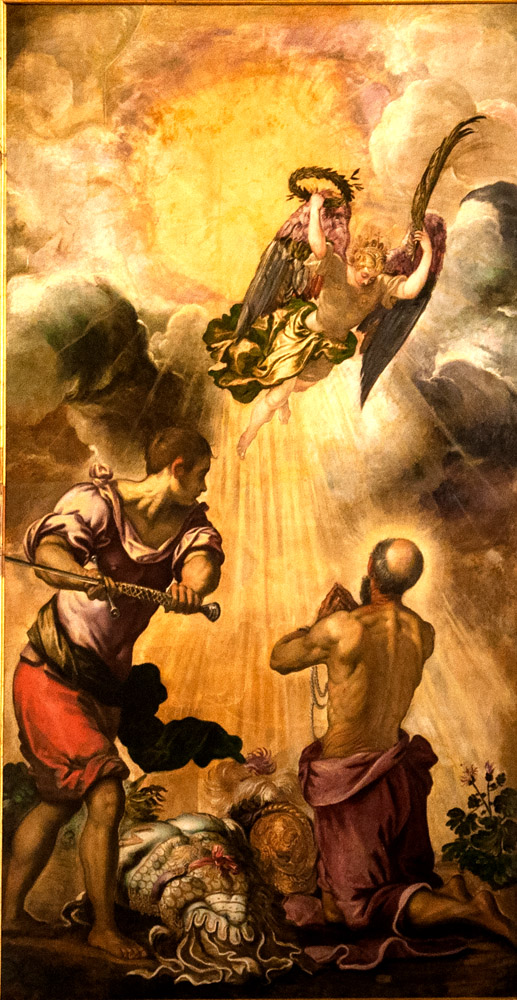
Jacopo Tintoretto
The Martyrdom of St. Paul
1556
Oil on canvas
Church of Madonna dell'Orto, Venice
Writing from prison and contemplating the prospect of martyrdom, St. Paul expressed to the Corinthians his "eager expectation and hope" that he might glorify Christ whether by living to continue his work or dying to be a witness to him, "For to me, to live is Christ; and to die is gain" (1:21). Reflecting this eagerness to be with Christ, Tintoretto turns the saint away from the executioner and the viewers, and toward the holy light from above. Paul ignores the executioner because the meaning of a Christian death is not finality but union with Christ, and he turns from the viewers because his work with them is done.
It is conventional to picture an angel bringing a martyr the crown or palm branch that symbolized an athlete's victory in classical iconography, but this case is especially appropriate because the use of that symbol in Christian imagery is based on St. Paul's remark in 1 Corinthians 9:24, "Know you not that they that run in the race, all run indeed, but one receiveth the prize? So run that you may obtain."
The armor lying on the ground to Paul's left seems puzzling. If it belongs to the executioner, one wonders why a soldier would need to take off his armor in order to use his sword. It may instead be the symbolic "armor of God" that Paul urges the Ephesians to put on (6:11) "that you may be able to stand against the deceits of the devil" and that martyrs no longer need when they are taken into God's light.
View this image in full resolution.
Read more about images of St. Paul.
Photographed at the church by Richard Stracke, shared under Attribution-NonCommercial-ShareAlike license.